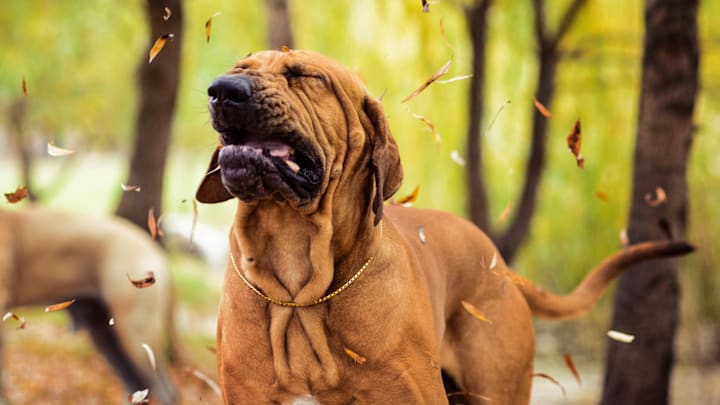Canine quirks often vacillate between adorable (cocking their heads to the side) and obnoxious (scooting over your freshly vacuumed carpet). Occasionally, your dog's behavior may fill you with panic. If you witness your pet reverse-sneezing—i.e. rapidly and forcefully sucking air through their nose, as if they're struggling to breathe—don't be alarmed. Though it looks scary, reverse-sneezing in dogs is no more dangerous than sneezing in humans.
Reverse-sneezing happens when a dog involuntarily snorts air in instead of out—hence the "reverse" part of the name. Also known as paroxysmal respiration, the reaction occurs when a dog's airways spasm, forcing air in through the nose. The convulsive nature of the sneeze makes it look more serious than it actually is. Don't mistake your dog's violent snorts for breathing problems. The cause is likely an irritant tickling their nose and throat.
Allergens like dust and pollen can trigger this bodily response. Like a forward sneeze, a backwards sneeze helps dislodge particles from sensitive areas in a dog's respiratory system. Hot weather, over-stimulation, and eating and drinking have also been known to exacerbate the behavior.
If you catch your dog wheezing, snorting, and breathing erratically for up to a minute, gently comfort them while waiting for the sneeze to pass and then offer them some water. Occasional episodes are nothing to worry about, but frequent reverse-sneezing in dogs may be a sign of a more serious problem. If the reaction becomes a regular occurrence, take your pet to the vet. They may have something stuck in their nasal passageways they can't dislodge through sneezing alone. It's also possible they have allergies, which can be treated with medications like antihistamines.
It's important to watch your dog for unusual behaviors—especially when it's hot outside. Here are some tips for keeping pets safe this summer.
